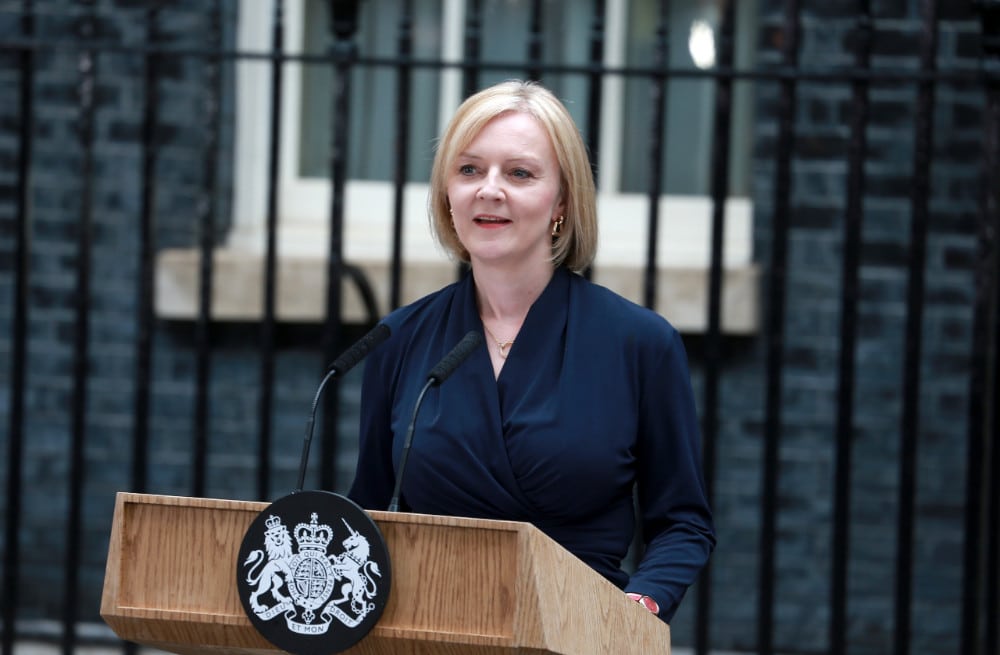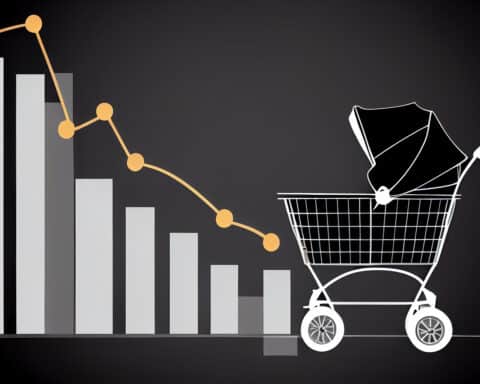I used a recent editorial in the Wall Street Journal to explain to my freshman students what, as Catholic citizens, they needed to know by the time they left college. It was a two-paragraph editorial, not especially technical. Catholics were under a serious obligation, I said, to be even more familiar about economic matters affecting the country than others. Here was a brief argument that was clearly intended by the Journal’s Editorial Board for the general reader. It was about the bond crisis in Great Britain last week. How much of it did they understand? How much did they think the typical Catholic understood? Could they reach an informed opinion on the matter?
I told them that they certainly would live through a financial crisis on the scale of the “Global Financial Crisis” of 2008. Such a crisis may even arise soon. When it breaks out, it might very well appear first as something small and localized. Not out of alarmism, then, but out of prudence, it was a good idea to keep an eye on such things as the British bond crisis.
The crisis was all the more important, because it was being turned against Britain’s new — now resigned — prime minister, Liz Truss. The economic and the political are inseparable. They are inseparable, too, from the ethical dimension. Ethical judgments let loose without a grasp of the economic and political realities were liable to be destructive, not upbuilding.
Infighting and distractions were weakening our country, I said. TikTok, Instagram, Trump (for or against), sports, gambling, binge watching, video games — breads and circuses. Let’s take first of all the fact that Britain had a new prime minister — “had” now being the operative word, as Truss resigned amid the crisis on Thursday, Oct. 20. Did you know her name before her resignation? Do you know whom she replaced and why?
Truss campaigned on a supply-side platform of tax cuts, deregulation and targeted investments, all intended to foster growth. Supply-side economics, in a nutshell, is the view that the common good is better promoted if the government takes smaller slices from a growing pie rather than larger slices from a diminishing pie. (My students are too young, of course, to remember Reagan and Thatcher.)
You have to know the angles. Supply-side policies will always be vulnerable to political attack, because they involve risk, they look like they are favoring the wealthy, and they look like they recklessly drive up government debt — while, in contrast, deliberate deficit spending by the government, strangely, isn’t exposed to such criticism. That’s just the political perception, the political reality. You have to deal with it.
It’s good to have a grasp of background realities. Did students know what the tax burden was in the U.K.? (They guessed 10%.) The average worker pays 30% income tax, about 15% in National Insurance and 20% Value Added Tax on most expenditures. Companies don’t even get around to paying workers until they’ve paid 30% in corporate taxes. Government is a behemoth in Britain. In 1920, it accounted for under 5% of GDP, but today, about 50%. (My students guessed 5%.)
These numbers look favorable to “the common good” only on the assumption that government alone promotes the common good — and on the assumption that this way of doing things is sustainable when Brits (and Americans!) are not having children even at a replacement rate.
But here’s another background fact. What has been the basic interest rate, as set by central banks, in the United States, the United Kingdom and other countries for the last 10 years? They guessed 5%. I showed them the chart from the FRED website of the Federal Reserve Bank of St. Louis. It shows that the rate, for a long time, has been close to 0%, which means, if there has been any inflation at all, the “real” rate was negative — an unheard of policy, historically.
Other very frightening graphs for them included the soaring federal debt-to-GDP ratio, now over 120% (and projected to keep increasing), the $3 trillion of deficit spending in 2021, and the graph showing that the Biden administration had doubled the money supply over the last two years. (Can anyone say “inflation”?)
I asked them if they thought they’d be in a good position after college if they had a job paying $50K, unsecured debt of $60K subject to higher payments if interest rates went up and (importantly) a lifestyle that meant they planned to keep adding to that debt, year after year, with diminishing prospects of raises in their salary.
Most students and most Catholic citizens lack awareness of any of these things. The first ethical instinct of many Catholics in the face of a social problem — “there oughta be a government policy and government spending” — looks like it should at least be second-guessed given this background.
But now, back to Liz Truss and the British bond crisis. Last week, the British bond market went into free fall. The Bank of England stepped in to buy bonds in order to stabilize the market. The crisis seems to have been allayed, although some warn that that brief and localized meltdown was the proverbial canary in the coal mine.
Predictably, Truss’ political opponents blamed her supply-side budget for spooking the markets, especially her proposed income tax cut for top earners (45% to 40%). With her supply-side initiatives sunk, she has left office. But the Journal editorial claimed this was a false diagnosis, a political ruse, propaganda. They argued that the low interest rates set by the central banks were the culprit.
Here is their argument. Do you understand it? If not, then perhaps books on economics and the financial markets should be on your nightstand, and you should read the WSJ just after you do your lectio divina.
Because interest rates were so low for so long (and many economic gurus claimed they could and should stay low indefinitely), managers of “defined benefit” pension plans in Britain were driven to desperation, as low interest rates make investors take risks they perhaps should not have taken. It would be impossible to meet these payments with traditional investment strategies. They turned to “Liability Drive Investments” (LDIs). This means that instead of building up the assets of the plan, they adopted the more modest goal of just making sure they had the cash on hand to pay out benefits when they would be needed (according to the actuarial tables). LDI strategies depend on a scaffolding reaching into the future of “derivatives” — hedges and swaps — that are highly sensitive to interest rate changes. As interest rates went up, these managers needed to post collateral. They sold bonds in a fire sale to do so.
There is a further twist to this story: These managers also sold lots of CLOs (collateralized loan obligations), which connect to other markets and that may have hidden risks like the CDOs (collateralized debt obligations) of the last financial crisis. So, the story may not quite be over.
OK, that’s a lot to digest, granted. But Catholic citizens need to be in some kind of position to evaluate the arguments here, or else — you can count on it — they will simply be manipulated by propaganda, like everyone else, and government will use the next government-induced crisis to grab more government power, and the true common good will suffer.
The “well-educated laity,” which St. John Henry Newman desired — the laity that have as their primary responsibility the ordering of the secular sphere to God, as Vatican II intended — must have truthful, well-grounded views about economics.
Michael Pakaluk is a professor of ethics and social philosophy in the Busch School of Business at The Catholic University of America in Washington, D.C., and a member of the Pontifical Academy of St. Thomas Aquinas.





